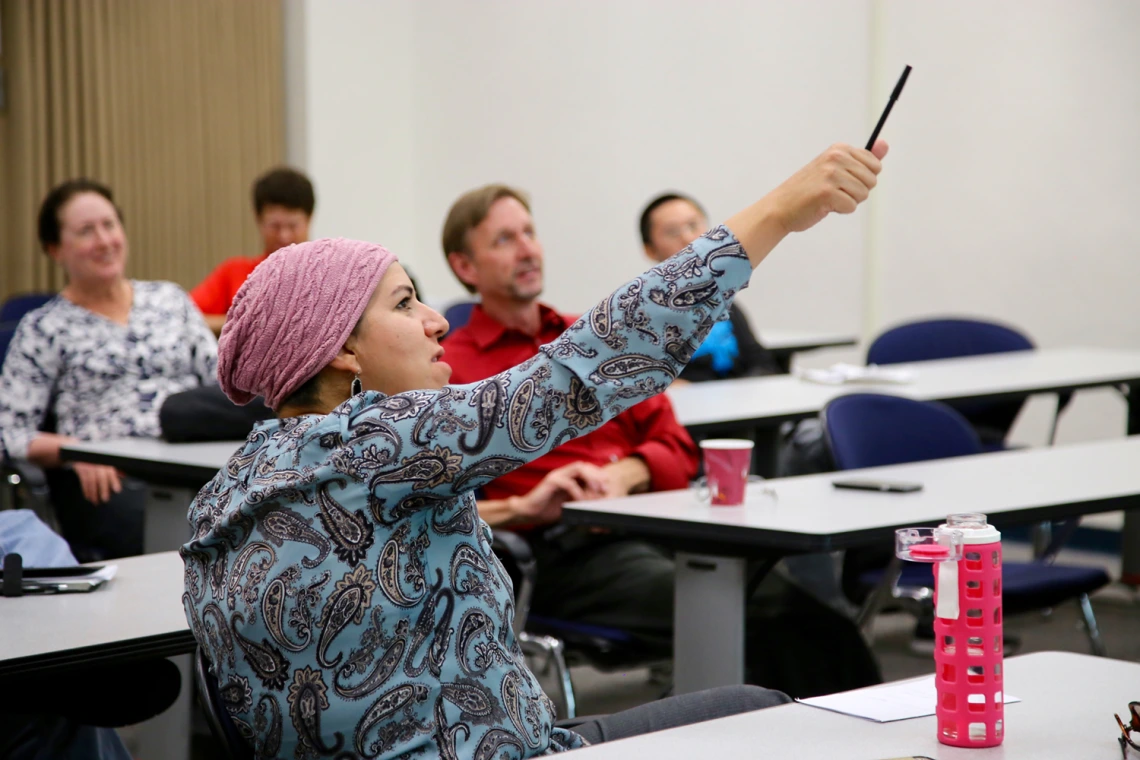UA I-Corps Teams Get Funds to Find Customers for Inventions

With their novel technologies ranging from a new drug for neurological disorders to systems for managing drones world-wide, the University of Arizona’s first cohort of NSF I-Corps teams have moved through the I-Corps site curriculum, a three-week course run through Tech Launch Arizona at its community partners.
The NSF I-Corps program provides funding in the form of up to $2,250 grants to help entrepreneurial teams with innovative technologies discover their customers and get to know those customers’ priorities.
In total, the grant provides TLA with annual funding for three years to distribute to 30 selected I-Corps applicant teams each year. Each team consists of a PI-eligible academic lead, an entrepreneurial lead, and a mentor.
“The mentors are an essential part of each team,” says Eric Smith, Tech Launch Arizona commercialization network manager and one of the managers of the I-Corps program at the UA. “Most teams come to us with a principal investigator and an entrepreneurial lead. Then, we help match them with a mentor who can best help them with customer discovery and engagement. To do that, we draw on our network.”
The network Smith refers to is the same 1,300-member domain expert network that TLA has built to volunteer their knowledge and ensure that UA inventions are successfully and strategically moved from the University into the market.
In the case of these UA I-Corps teams, experienced mentors contribute to the learning experience, but are also part of the teams, individualizing their advice to help other team members learn the best ways to engage their audiences.
“The courses and classes that I took in this program were very helpful to give me a better idea about the future of this technology,” says Iman Daryaei, chemistry and entrepreneurship graduate student and entrepreneurial lead for the Theracea Pharma team. The program has helped him and his team members figure out “what market should I target and who are the potential customers in the market and how is the demand for this technology out there.”
The spring 2016 cohort comprised seven teams:
CHRE2D: a computer software that simulates flood inundation processes, enabling the general public and professional engineers to view and track flood impact areas through internet in real time. Academic lead: Associate Professor Jennifer Duan, Ph.D., UA Department of Civil Engineering, College of Engineering. Entrepreneurial lead: Jaeho Shim, graduate student in civil engineering. Mentor: Dr. David Williams.
Drone Area Flight Control: a task-based modular drone management system that allows users and automated systems to submit tasks for drones to do, from package delivery to photography. Academic lead: Regents Professor Michael Marcellin, Ph.D., Electrical and Computer Engineering, College of Engineering. Entrepreneurial Lead: Mark Omo, undergraduate student studying pre-computer science in the College of Science. Mentor: Patrick Marcus.
ChemELD: An innovative engineering process to apply metal coatings to to other metals, paper, glass and plastics in a manufacturing environment. Principal investigator: Academic lead: Professor of Chemical and Environmental Engineering Anthony Muscat, Ph.D. Entrepreneurial lead: engineering graduate student Lance Hubbard. Mentor: Jed Bothell.
Theracea Pharma: A new treatment for neurological disorders that counteracts dyskinesia, such as that caused by L-dopa, the standard for Parkinson’s disease. Academic lead: Dr. Victor Hruby, Regents professor, chemistry and biochemistry and BIO5 member. Entrepreneurial lead: chemistry and entrepreneurship graduate student Iman Daryaei. Mentor: TLA Mentor-in-Residence Mike Sember.
Millimeter Wave Detection System: A system that detects threat objects within multiple people’s shoes, simultaneously with a high degree of reliability. The solution can be used as a stand-alone foot sensor or an integrated part of larger, existing airport security systems. Entrepreneurial Lead: electrical and computer engineering and optical sciences graduate student Min Liang. Academic lead: Hao Xin, Ph.D., professor of physics and electrical and computer engineering. Mentor: Trina Callie-Dixon, Ph.D.
Regulonix: A portfolio of small molecule inhibitors, and using novel targets has come up with methods for solving problems around chronic pain. Academic lead: Assistant Professor of Pharmacology May Khanna, Ph.D. Entrepreneurial lead: Associate Professor of Pharmacology Rajesh Khanna, Ph.D. Mentor: TLA Mentor-in-Residence Mike Sember.
Lum.ai: A natural language processing (NLP) technology that "reads" written text (currently scientific publications) and extracts the causal mechanisms described. Academic lead: Mihai Surdeanu. Entrepreneurial leads: Gus Hahn-Powell and Marco Valenzuela. Mentor: TLA Mentor-in-Residence Kevin McLaughlin.
Ultimately, the goal is to help each team figure out the viability of their technology, and at the end of the program based on their now much more intimate understanding of the market and their customers, each team makes a “go” or “no-go” decision on continuing to move forward with their technology.
They also decide whether they will continue to pursue an I-Corps Teams grant, which provides an additional $50,000 for further customer and market discovery.
NSF Innovation Corps or "I-Corps," is an initiative designed to prepare scientists and engineers to expand their focus beyond the laboratory and increase the impact of basic research. Tech Launch Arizona was selected as an I-Corps site in early 2016.
TLA is now accepting applications for the next I-Corps cohort; applications are due on June 24, 2016.

